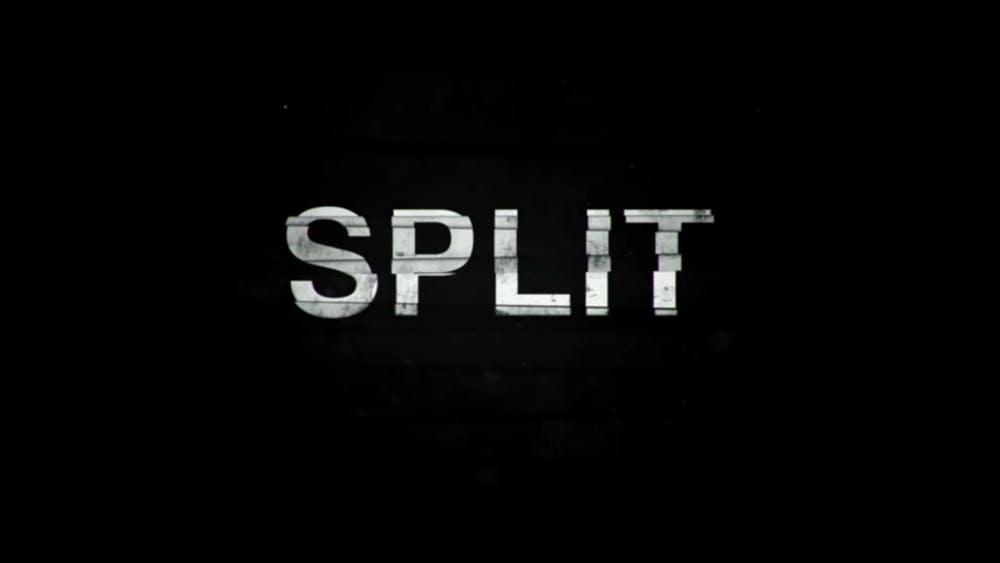by Ian Pemberton Anyone remotely familiar with film from the past twenty years could tell you the legendary rise and meteoric fall of the director M. Night Shyamalan. His breakout film, The Sixth Sense, set audiences ablaze with fervor. “Who is this new director,” they asked themselves, “that could make such a thought-provoking film?” As his career continued, his critical reception gradually dwindled to a generally negative opinion of him. That brings us to Split, Shyamalan’s latest endeavor. His film After Earth (2013) seemed to show the audience once and for all that Shyamalan’s career was over; the trailers didn’t even credit him as director, almost as though they were ashamed to be associated with him. The Visit (2015), his previous project, harbored more praise, gaining a 64% on Rotten Tomatoes compared to After Earth’s shameful 11%. Where does that leave his latest film? Well, the year is 2017, and M. Night Shyamalan is a good director again.
Splicing the narrative
...if you are interested in seeing this film, keep the word ‘split’ away from your search bar.The story follows three young women who were abducted by a man with a severe case of Dissociative Identity Disorder, more commonly known as Multiple Personality Disorder. James McAvoy stars as the troubled psychotic Kevin, and this is truly where the movie polishes off the muck of Shyamalan’s previous critical failings and grips viewers all the way to their cores. Kevin keeps the girls trapped in an underground dungeon, and the girls eventually discover his strange condition. From there, the film splits into two narratives. The first follows the struggles of the girls to escape from their mentally unwell captor. The second narrative is of Kevin visiting his therapist Dr. Fletcher because of his conflicting personalities. This might sound a little odd, but if you are interested in seeing this film, keep the word ‘split’ away from your search bar. The plot twists and turns in ways that may at first seem strange and downright ridiculous, but eventually weaves a clever narrative that asks powerful questions about the human mind.
Kevin
 As the movie progresses, McAvoy changes from personality to personality with ease while his mannerisms and ticks show his thoughts externally. He crawls on his knees to hear a hushed whisper as the innocent Hedwig and makes a mayonnaise and paprika sandwich for the frightened girls as the matronly Patricia. One struggles to think of another actor who could have pulled off the role as stunningly well as he did, and he honestly makes a career-defining performance.
If the movie contained only scenes about him, or was focused entirely on his portrayal of Kevin, it would be outright flawless. His performance (performances?) as multiple characters allowed for moments of the film during which the audience would burst out in laughter not even five minutes after being chilled to the bone.
However, the movie does have its shortcomings.
As the movie progresses, McAvoy changes from personality to personality with ease while his mannerisms and ticks show his thoughts externally. He crawls on his knees to hear a hushed whisper as the innocent Hedwig and makes a mayonnaise and paprika sandwich for the frightened girls as the matronly Patricia. One struggles to think of another actor who could have pulled off the role as stunningly well as he did, and he honestly makes a career-defining performance.
If the movie contained only scenes about him, or was focused entirely on his portrayal of Kevin, it would be outright flawless. His performance (performances?) as multiple characters allowed for moments of the film during which the audience would burst out in laughter not even five minutes after being chilled to the bone.
However, the movie does have its shortcomings.
His victims
 While McAvoy was a spectacle to watch, the other performances ranged from ‘passable,’ to ‘I mean, they tried I guess.’ None of the other actors shine as brilliantly as McAvoy, and some of them are reminiscent of Shyamalan’s other work with their stilted dialogue and shallow emotions.
The other ‘main’ character, Casey (as portrayed by Ana Taylor-Joy), had some interesting character moments because of the writing but paled in comparison. However, the longer the movie’s run time gets, the more screen time McAvoy gets, making the movie ironically much more defined by its title in more ways than one.
While McAvoy was a spectacle to watch, the other performances ranged from ‘passable,’ to ‘I mean, they tried I guess.’ None of the other actors shine as brilliantly as McAvoy, and some of them are reminiscent of Shyamalan’s other work with their stilted dialogue and shallow emotions.
The other ‘main’ character, Casey (as portrayed by Ana Taylor-Joy), had some interesting character moments because of the writing but paled in comparison. However, the longer the movie’s run time gets, the more screen time McAvoy gets, making the movie ironically much more defined by its title in more ways than one.
Splitting the aspects
The soundtrack for the rest of the film quickens viewers’ pulses, and the visuals compliment them by making viewers’ hands tighten in suspense.The production was excellent both aurally and visually. The only moment that could be called outright ‘bad’ would be the ending, which due to a certain actor both shatters the immersion of the film visually (get that mouse away from that search bar) and aurally assaults the ears. The soundtrack for the rest of the film quickens viewers’ pulses, and the visuals compliment them by making viewers’ hands tighten in suspense. The story was also a plus, which while forced at times, captures intrigue, suspense, and even fright from the unsuspecting audience. Admittedly the film asks some questions about mental health perhaps better left unasked, most viewers will likely be thinking about the film as they leave the screen on which they watched it.
Putting it all back together again
 As a whole, Split is a movie recommendable to just about anyone and one that possibly improves with more views. Though it’s flawed, the spectacular showing of skill by McAvoy was the saving grace the film needed to band together its fractured whole.
It’s not a perfect film, although considering Shyamalan’s recent work it could be thought of as a masterpiece of cinema. The symbolism in the film is very well-thought, and honestly this film is a must-watch for film-lovers.
All Images From: Forbidden Planet International, Firstshowing.net, Dread Central, and Split
As a whole, Split is a movie recommendable to just about anyone and one that possibly improves with more views. Though it’s flawed, the spectacular showing of skill by McAvoy was the saving grace the film needed to band together its fractured whole.
It’s not a perfect film, although considering Shyamalan’s recent work it could be thought of as a masterpiece of cinema. The symbolism in the film is very well-thought, and honestly this film is a must-watch for film-lovers.
All Images From: Forbidden Planet International, Firstshowing.net, Dread Central, and Split



















